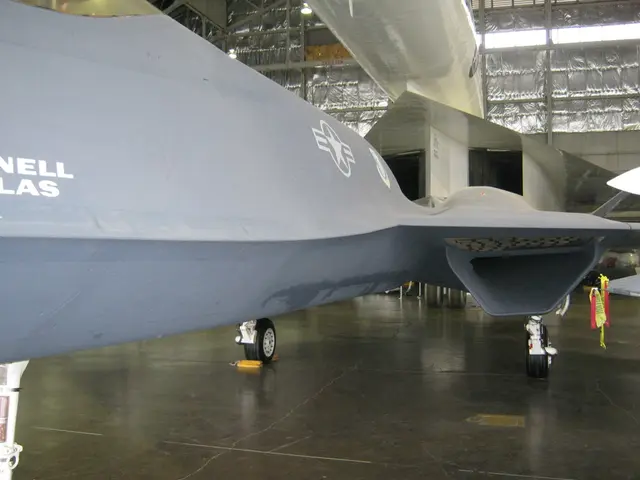Computer Vision's Impact on Finance's Tomorrow: A 16-Point Perspective
Revolutionizing Financial Services with Computer Vision
The financial industry is on the brink of a visual intelligence revolution, as emerging trends reshape financial services more dramatically than ever before. This transformation is driven by the powerful tool of computer vision, a technology that is poised to redefine the way financial institutions operate.
Computer vision can detect fraudulent devices attached to ATMs in real-time and send alerts to security personnel, offering a robust defense against potential threats. This real-time fraud detection can protect a vast number of potential victims from a single compromised machine, saving institutions millions in potential losses and chargeback fees.
Advanced computer vision goes beyond just analyzing images. It creates them too. Banks can generate realistic training simulations, producing synthetic data for better model performance, or design personalized marketing visuals automatically. This cutting-edge technology can also augment human staff by automating tasks such as pulling information from customer papers, allowing workers to focus on important tasks that require human thinking and people skills.
One practical application of integrating computer vision in financial operations is remote asset inspection. This eliminates the need for expensive and time-consuming physical inspections, especially for large or remote assets. For instance, drones equipped with high-resolution cameras can survey properties and identify defects or value changes for commercial lending and property insurance.
Deep learning and neural networks, Optical Character Recognition (OCR), facial recognition, object detection, and Convolutional Neural Networks (CNNs) are all key components of computer vision in finance. These features work in concert to create robust systems that not only see but also understand the nuances of the financial world.
Integration of visual data processing will happen directly on local devices-ATMs, branch terminals-instead of cloud servers, cutting response times, strengthening security, and enabling real-time applications where split-second decisions matter most. This automated compliance monitoring can drastically reduce the risk of non-compliance fines and legal action.
When looking at possible partners for implementing computer vision, focus on industry knowledge, strong technical skills, and clear communication and ongoing support. Appinventiv, a globally recognized technology leader, offers robust security protocols, proven track record, industry recognition, and a 97% client retention rate. They bring unparalleled expertise to fintech software development, with over 3,000 successful project deliveries across 35+ industries.
Companies like Itexus and Rize Capital have achieved significant success using computer vision in finance by developing AI-driven fintech solutions for fraud detection, predictive analytics, and compliance tools. Major technology firms such as Oracle also play a key role as infrastructure providers supporting AI’s financial applications, while emerging companies like Nebius have rapidly gained market value through specialized AI offerings impacting finance.
However, rolling out advanced technology like computer vision needs careful planning that balances business objectives with realistic implementation steps. To make money back, you need to focus exactly on which business problems you're really solving. Following the steps in implementing computer vision in financial services works best when done step by step, starting with a small test to check basic features, then expanding to a pilot program with real users, and finally using it across the whole company.
The Cost of implementing computer vision in financial industry projects usually costs $50,000 to $350,000 for complete custom solutions. The challenges and benefits of computer vision in finance present a clear trade-off. Significant investments in technology, data infrastructure, and specialized talent are required upfront, but the returns, stronger security, streamlined operations, and exceptional customer experiences far outweigh these initial costs.
Financial institutions face a defining choice right now. Will you watch from the sidelines while competitors harness this transformative technology, or will you take decisive strategic action? Industry leaders will emerge from organizations that not just adopt computer vision but actually master its practical implementation. Contact us today to revolutionize your financial operations with intelligent computer vision.
Read also:
- Fructose Market Forecasted to Exceed $8.1 Billion by 2034
- Latest Edition of Bus-News Magazine Arrives for 2023!
- Testing the Camp Mode of the 2025 Tesla Model Y with Juniper's interior housing two kids, shockingly low CO2 levels were discovered.
- Week 40, 2024: Model 3 hits staggering 729-mile range, Spotify disabled in vehicles, China imposes tariffs, Cybertruck recall announced








